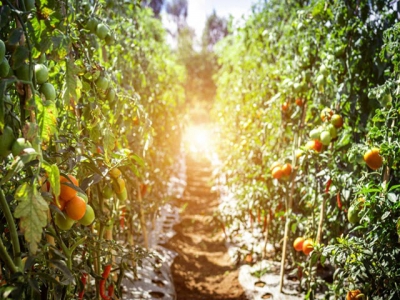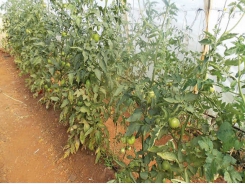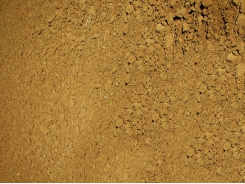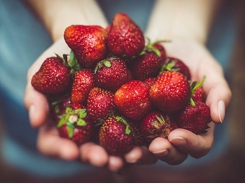10 new vegetables and herbs for your garden this spring

Branch out this year with varieties that will bring new flavors to your table.
Looking to spice it up this year in the old vegetable patch? Plant breeders are always rolling out new varieties and reviving forgotten heirlooms that offer tantalizing tastes. Here are a few to consider.
1. Habanada pepper
Row 7 Seed Company, the new seed supplier founded by chef Dan Barber of Blue Hill Stone Barns fame, has a growing selection of never-before-seen vegetable varieties, including this twist on a famously hot pepper. It has habanero flavor without all the heat. Get it? “Nada” of the “haba”?
2. Georgia cabbage collards
This low-growing collard forms loose heads with a cabbage-like flavor. An old-fashioned hybrid that was likely once grown throughout the South, this variety was nearly lost until a man named Bobby Prevatte, who inherited seeds from his grandparents, brought it to the attention of botanists. It’s now available from Southern Exposure Seed Exchange.
3. Mouse melon
While it may look like a watermelon that has been shrunk down to the size of a grape, this traditional Mexican vegetable is more closely related to cucumbers. New to North American palates, it’s suddenly a hot item at specialty seed companies. The flavor is cucumber-like but with a delightful bite — it’s often described as a cucumber that’s already been pickled.
4. Ground cherry
This unique crop looks like a cherry tomato but comes wrapped in a papery husk like a tomatillo. A relative of both vegetables, the ground cherry has a flavor that’s a cross between the two: sweet and tomatoey, with a piquant aftertaste. As a bonus, it’s not susceptible to the myriad pests and diseases that plague tomato plants.
5. Yacón
Hailing from the high Andes, this ancient vegetable has recently found its way onto American plates. It’s the tuberous root of the South American sunflower, which grows readily in North American soils. Raw yacón has a crunchy texture, with a flavor somewhere between celery and green apples. It’s often added to salads, but it can also be cooked like a sweet potato.
6. Honeynut squash
Another recent invention of the folks at Row 7 Seed Company, this is, essentially, a miniaturized version of butternut squash. The idea behind the company is to develop new vegetables bred specifically with chef-level culinary attributes. Honeynut squash, which has quickly become the darling of foodie circles, is Row 7’s first smashing success. It concentrates all the flavor of a full-size butternut squash into a smaller, more potent package.
“Row 7 no longer sells Honeynut seed—the squash has been further refined into a new variety, the 898 squash—though Honeynut seeds are available at other nurseries. “
7. Tree collards
These purplish-green collards grow on spindly stalks up to 10 feet tall. The flavor is sweeter and nuttier than standard collards. Even more impressive is their perennial nature: Unlike annual vegetables, tree collards produce year after year without replanting. Unfortunately, they only do so in mild-winter regions (prolonged temperatures below 20 degrees Fahrenheit will kill the plants). The good news is that you can grow them in a pot and cut the stalks down to a reasonable size before you bring them indoors for winter.
8. African blue basil
Speaking of perennial plants, here is a rare perennial basil, though it, too, dies when the cold weather arrives unless you bring it indoors. African blue basil isn’t blue, but it is beautiful, with purple-tinged foliage and flowers. It grows into a compact, rounded shrub that looks more at home in a flower border than a vegetable garden.
9. Roman camomile
German camomile — the kind that’s typically brewed for tea — grows as a spindly, weed-like plant. Roman camomile — its distant cousin — grows as a flat green mat, about three inches tall, that tolerates foot traffic and can be used as an herbal lawn. A cold-hardy perennial, it has a similar flavor and fragrance to German camomile (an annual) but is much more concentrated. Use it as an ingredient in sweet iced tea, or simply sprawl out on the plant for an aromatherapy session.
10. Lavender mint
Plant breeders are always coming up with new varieties of mint — a plant that is unusually amenable to genetic tinkering (we’re talking old-fashioned breeding here, not genetic engineering). There’s chocolate mint, pineapple mint and lemon mint, among many others. Now, there is also lavender mint. With two of the world’s most popular herbs combined into one, what’s not to like?
Có thể bạn quan tâm
Phần mềm

Phối trộn thức ăn chăn nuôi

Pha dung dịch thủy canh

Định mức cho tôm ăn

Phối trộn phân bón NPK

Xác định tỷ lệ tôm sống

Chuyển đổi đơn vị phân bón

Xác định công suất sục khí

Chuyển đổi đơn vị tôm

Tính diện tích nhà kính

Tính thể tích ao hồ




 Planning for the planting season
Planning for the planting season  Seven crops to plant in late winter
Seven crops to plant in late winter